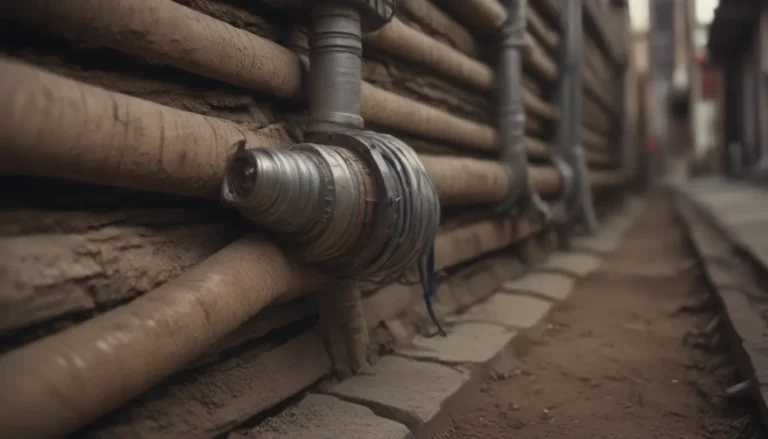A Comprehensive Guide to Different Types of Saws and How to Choose the Right One

Saws are a fundamental tool used for cutting various materials such as wood, metal, plastic, and more. With a history spanning millennia, it’s no surprise that there’s a wide array of saw types available, each designed for specific purposes. Whether you’re a seasoned DIY enthusiast or a novice looking to tackle your first project, understanding the different types of saws can help you choose the right tool for the job and achieve the best results. From manual saws that offer precision cuts to power saws that save time and effort, there’s a saw for every task.
Manual Saws vs. Power Saws
Manual saws are great for precise cuts in a variety of materials or rough cuts like trimming shrubs or cutting down trees. On the other hand, power saws provide the driving force behind the saw with just the push of a button or the squeeze of a trigger, making cutting tasks faster and easier. However, it’s important to note that using power saws comes with significant risks, so it’s essential to familiarize yourself with these tools before using them.
Here are 15 types of saws to consider for your next project:
1. Hacksaw
- Best for: Cutting through copper, iron, or lead pipes
- Recognizable by the metal C-frame and thin blade
- Ideal for metal and plastic, not recommended for wood
- Available in various sizes and designs
- Blade is brittle and not suitable for wood
2. Crosscut Saw
- Best for: Trimming trees, shrubs, and hedges
- Characterized by large rows of teeth and a thick blade
- Less frequently used for cutting lumber
- All-purpose saw that requires endurance
- Can’t cut through thick materials
3. Drywall Saw
- Best for: Making precise cuts in drywall and paneling
- Features a narrow, pointed nose and thick teeth
- Essential for electrical work or access panels
- Only works well with drywall
- Teeth on one or both sides for custom cuts
4. Bow Cut Saw
- Best for: Cutting tough lumber, logs, and small trees
- Ideal for pruning trees and maintaining bushes
- Features a curved metal handle for ergonomic use
- Bulky to store and doesn’t cut well on angles
5. Circular Saw
- Best for: Versatile cutting through wood, metal, plastic, and ceramics
- Features a large circular blade and adjustable plate
- Requires caution due to its powered blade
- Can deplete battery power quickly
- Track saws for precise cuts on long pieces of lumber
6. Miter Saw
- Best for: Making fast and precise cuts at various angles
- Different from chop saws with adjustable fence and saw
- Ideal for cutting different angles with accuracy
- Stationary and hard to transport
- Limited to cutting narrower materials
7. Chop Saw
- Best for: Vertical cutting at a 90-degree angle
- Large blade size for cutting multiple pieces
- Limited to making vertical cuts only
- Challenging to transport to job sites
8. Compound Miter Saw
- Best for: Precise and accurate cuts with various angles
- Features a circular cutting blade attached to an arm
- Can handle wood, plastic, metal, and composite materials
- Expensive and bulky but powerful
9. Jigsaw
- Best for: Making curved, angled, and irregular cuts
- Ideal for cutting wood, paneling, and drywall
- Offers handheld and portable use
- Not suitable for long, straight cuts
- Creates rough edges on materials
10. Band Saw
- Best for: Cutting wood, metal, and plastic with precision
- Fine teeth blade for intricate cuts
- Stationary with built-in features for securing materials
- Blades need frequent replacement
11. Table Saw
- Best for: Making precise and straight lengthwise cuts
- Broad, flat surface for larger materials
- Circular blade protrudes from the table’s top
- Suitable for cutting wide materials accurately
- Expensive but efficient for long cuts
12. Reciprocating Saw
- Best for: Portable cutting through wood, metal, and plastic
- Features a long body with a thin, reciprocating blade
- Requires control and precision to prevent bending or jumping
- Corded and cordless models available
- Not suitable for freestanding materials
13. Chainsaw
- Best for: Cutting through thick wood quickly
- Essential for pruning trees and shrubs
- Linked chain rotates rapidly to cut through wood
- Portable and efficient but safety concerns
- Generates a lot of debris when cutting
14. Wet Tile Saw
- Best for: Cooling blades while cutting tough materials
- Prevents chipping or cracking tiles
- Perfect for renovating bathrooms or installing backsplashes
- Specialized for cutting tile and ceramics
- Messy but essential for tile work
15. Pole Saw
- Best for: Pruning tall trees and hedges safely
- Mounted on an extendable pole for reach
- Designed to cut through sticks, leaves, and small branches
- Corded electric, gas-powered, battery-powered, or manual options
- Only suitable for cutting wood
Choosing the Right Saw
Before starting a project, it’s crucial to determine the tools necessary for the job. Consider the following factors when choosing a saw:
- Material: Ensure the saw is suitable for the material you’re cutting
- Type of Cuts: Select a saw that can make the cuts you require
- Maneuverability: Choose a saw that allows for precise and detailed cuts
- Safety: Prioritize safety features when working with power saws
- Portability: Consider the transportability of the saw for job site usage
Armed with this knowledge, you can confidently choose the right saw for your next DIY project and achieve professional results. Remember to prioritize safety when working with any type of saw, and always follow manufacturer’s guidelines for proper tool usage. Happy sawing!





